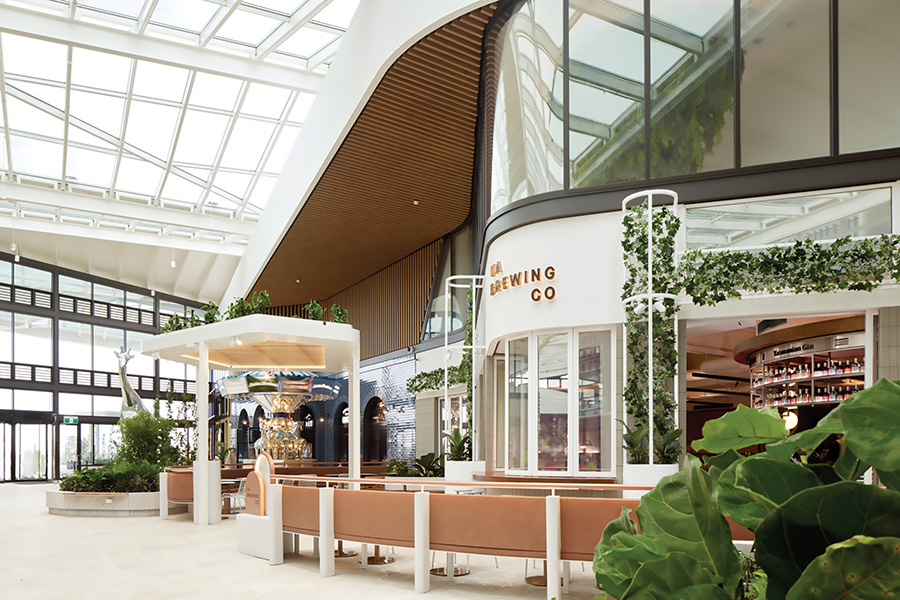The term ‘retail centre’ is definitely ‘old-hat’. Today our centres are lifestyle destinations, pleasure domes, entertainment hubs, experiential spaces… the list goes on. In this article for SCN, Allan Forsdick looks at food and hospitality as the connective tissue that binds together evolving shopping centres into the future.
The ABS’ monthly spending indicator* indicated that “household spending rose 8.2% in March compared to the same time last year.” This comes at a time when high interest rates and the cost of living are driving the conversation around dinner tables across Australia and New Zealand.
In the press release Robert Ewing, ABS Head of Business Indicators, went on to say, “The overall increase in household spending was driven by hotels, cafes and restaurants (+22.8%)… “Food will always be consumers’ priority in tough and good economic times, whether eaten at or away from home”.
As shopping centres seek to evolve and reimagine their place in our society as urban lifestyle destinations, it is no surprise that food, hospitality and entertainment are being used as part of a differentiation strategy – curating points of difference – to support the trend from traditional retail to ‘experiences’ and places.
In contemporary centre redevelopments, a new standard is prevailing that does not revolve around anchor retailers. More and more it is communal precincts of food and hospitality that act as conduits for socialisation within urban environments and adapt to changing consumer preferences, expectations and provide a compelling reason to return and spend.
Progressive shopping centres around the world
At the venue/concept level, successful food and hospitality operators that have a solid customer focus with great food and beverage will provide an initial boost, but the real opportunity lies in the evolution and curation of experience-driven clusters of F&B that drive long-term frequency of high visitation, create a positive sense of genuine revitalisation and enhance the centre’s destinational appeal.
One of the significant advantages that shopping centres have is their ability to determine and curate the standard of the hospitality experience that their F&B operators provide. Whether it’s within restaurant clusters, food courts/halls or the balance of centre, F&B operators (or, more meaningfully, ‘partners’) are the face of the centre’s experience and deliver ‘the moment of truth’. It is here, at a highly granular level, where the most focus and support should be to ensure the delivery of the centre’s promise and experience.
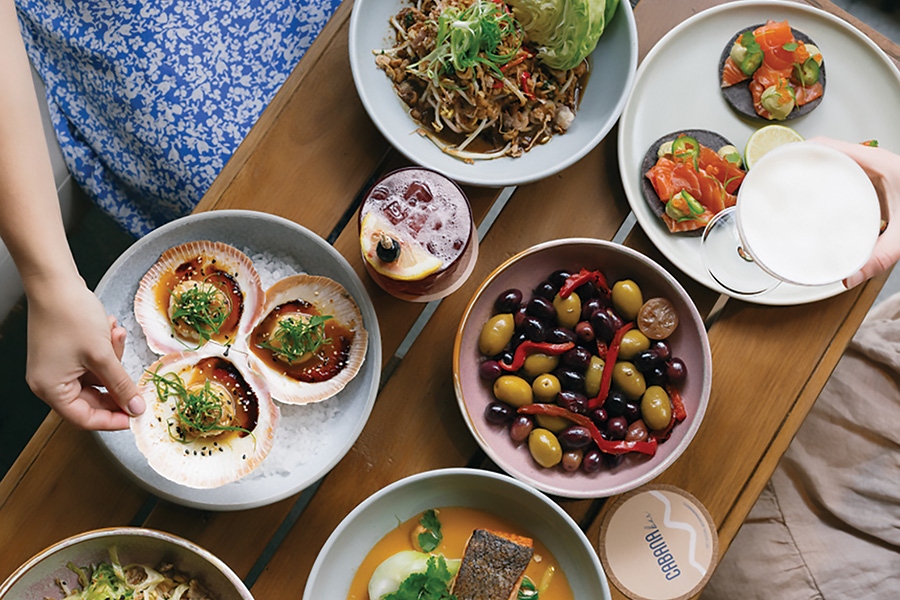
Cabana Bar, 25 Martin Place, Sydney
In the trend-driven, hyper-competitive F&B retail landscape, unique dining experiences, choice, diversity and convenience are driving factors of the F&B offers. Quality and price play a role but are not the only decision factor, even in challenging economic times, as ‘frugal-fatigue’ provides a ready excuse for the justification of discretionary spending.
The evolving customer landscape
Projects across Australia, New Zealand and around the world demonstrate the demand and consistent consumer trend towards experiential dining and the growth of food as the new anchor in our centres.
Across all levels of positioning, customers seek memorable experiences that are repeatable and relatable, in addition to basic sustenance needs and impulse purchasing. To maximise the opportunity these evolving expectations create, shopping centres and mixed-use precincts are embracing innovation and diversity of F&B concepts in a planned and strategic approach.
In Adelaide, the much-heralded Stage Six expansion of Burnside Village, due to open in 2025, will demonstrate the importance of food and hospitality in attracting new markets, enriching the experience of existing consumer cohorts and providing an experience economy that extends the life of the centre beyond the nine to five retail schedule. This is a deliberate strategy to diversify the F&B mix with an extensive hospitality overlay, to attract new customers for the long-term future of the centre.
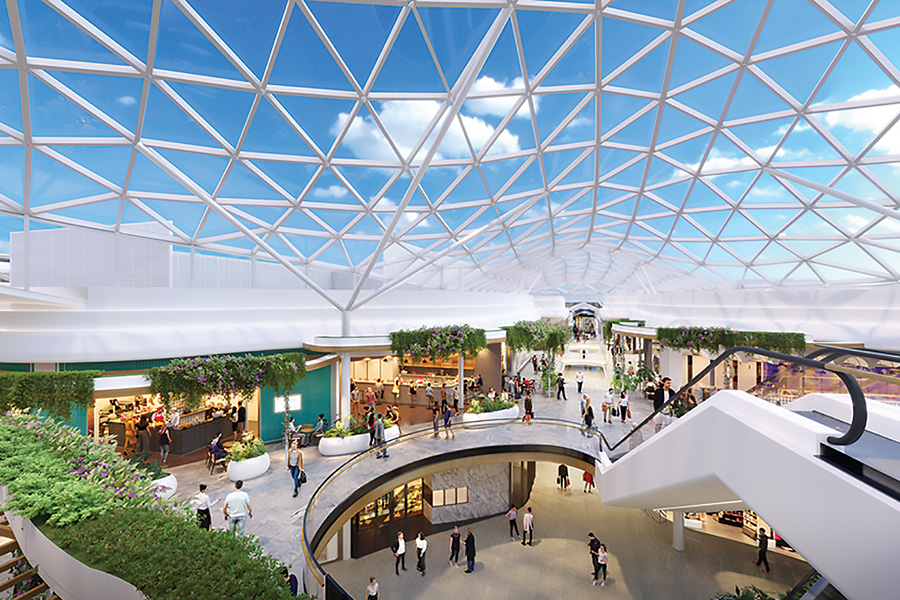
Stage Six expansion, Burnside Village, Adelaide
Chadstone’s recent opening of Social Quarter is another great example of a complete revitalisation of a space (former car park), utilising food and hospitality to drive a new ‘anchor’ direction for the centre.
Food has been a focus at Chadstone for a long time, but that has now hit the stratosphere with its completely unique experiential dining precinct anchored by a brewery, European-inspired all-day eatery and bar, Cityfields, and a range of integrated F&B/entertainment venues from Funlab. New Zealand hospitality group, The Good Group continues its consolidation in the Australian market with two new venues in The Social Quarter, White + Wong’s and Sardine, sister venues to those already launched in 25 Martin Place, Sydney.
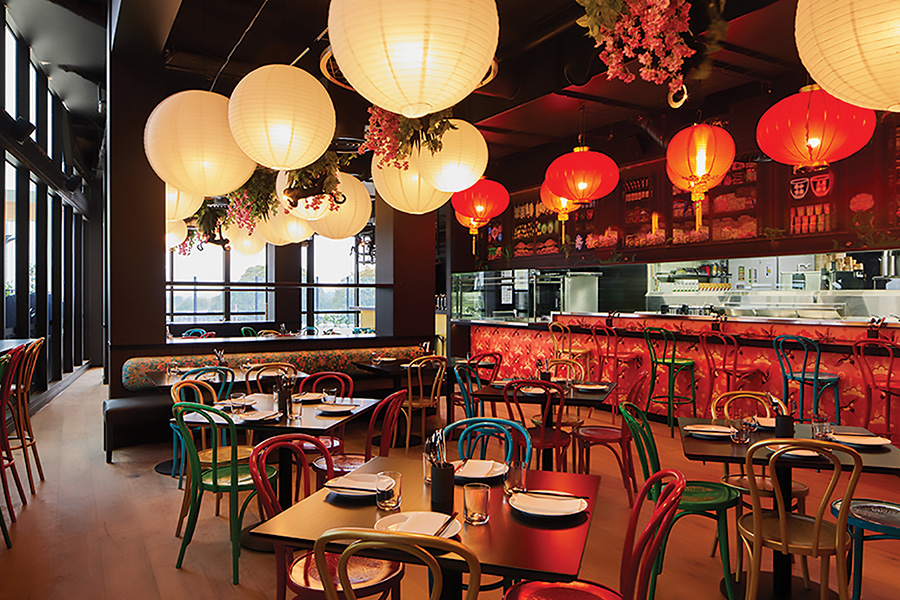
White + Wong’s, Social Quarter, Chadstone
Sydney’s Rhodes Central has provided its highly contested trade area with a new benchmark in dining and socialising. With more than 10,000m2 of GFA, and a core focus on food; Rhodes Central is an excellent example of how a differentiation strategy based on the local demographic can maximise F&B spending. Rhodes Central is not in this position on the merit of an excellent offer with amazing culinary capability. Rather, its success is based on a casual dining environment that has a culinary direction highly aligned with the local demographic at a price point that provides an opportunity for daily/frequent F&B spend. Its hospitality partners provide the centre with a significant diversity of offer within its positioning of East Asian cuisine styles. This includes Bamboo Lane, a streetscape food hall on the ground floor, augmented with a selection of design-driven cafes, casual dining and restaurants on level 1.
Understanding your customers
At the heart of successful F&B precincts, lifestyle and shopping centres or mixed-use precincts is a thorough understanding of the needs and desires of the target audience through market research, customer feedback mechanisms and trend analysis.
Utilising these insights to differentiate and curate the right food and hospitality overlay, gives rise to a unified and consistent experience. We must always consider the customer’s perspective when determining a complete F&B mix, correct for the centre and in the context of the catchment.
Many shopping centres and precincts now seek to be the benchmark and aspire to provide a lifestyle food and dining destination with a point of difference that delivers the smartest and most relevant food mix in its catchment.
Delivering exceptional experiences
Within their role, retail managers are constantly challenged to differentiate their centres and attract more people to visit and stay longer. Introducing new F&B concepts that prioritise experience-driven dining is crucial for enhancing the appeal of shopping centres and mixed-use precincts. By incorporating innovative and immersive elements, such as rooftop venues, market streetscapes, cafes and bars, restaurants, digitally interactive dining spaces and venues, pop-up F&B outlets and themed environments, we can captivate visitors and provide them with unique moments. These exceptional experiences contribute to a sense of revitalisation, driving customer engagement and positive word-of-mouth. By embracing innovative concepts and staying ahead of the curve, shopping centres and mixed-use precincts can remain relevant and compelling in a dynamic retail landscape.
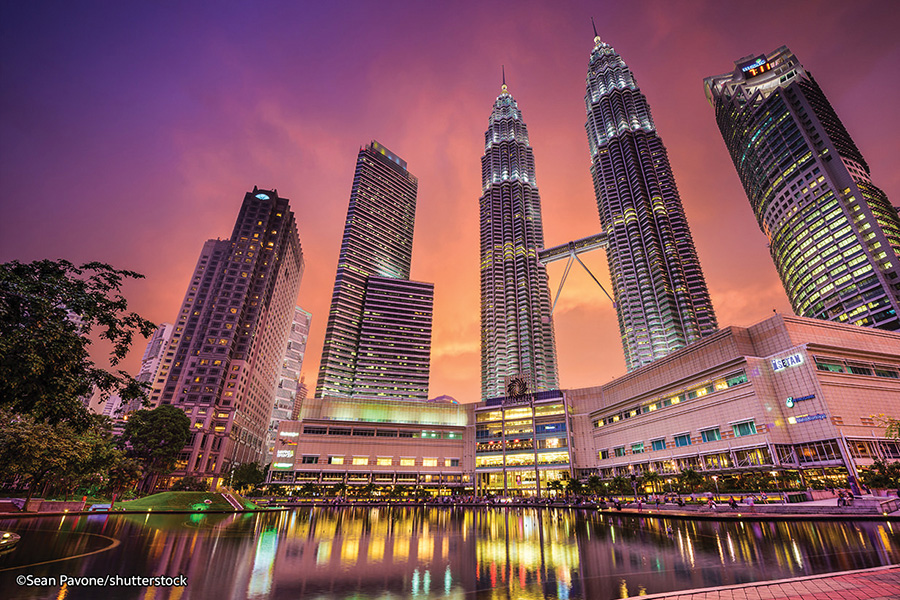
KLCC, Kuala Lumpur
KLCC’s centre in Kuala Lumpur is an excellent example of a centre that has created a diversity of destinational F&B precincts with a curated mix of regional Asian, local Malay cuisines and popular Western concepts. The all-day dining modern food hall and waterfront dining precincts also required our services for existing F&B partners to ensure that the centre fulfilled its positioning statement as the best dining destination in Kuala Lumpur.
KLCC recognised the value of existing F&B partners and that they couldn’t leave them behind in the revitalisation of the centre.
Retail managers across the board are focused on investing in F&B partners to improve the entire F&B mix.
Collaboration and synergy
At an operational level, it is the collaboration between centre management and F&B partners that provides the key to fostering highly productive and beneficial long-term relationships. The high-profile nature of benchmark food partners and hospitality groups now levels the playing field in terms of brand presence and exposure for shopping centres and mixed-use precincts. These hospitality professionals have their own following in a hungry food media savvy customer demographic, bringing a highly desirable credibility and creating a dynamic F&B offering that enhances the overall customer experience.
Collaborating in a partnership framework with local culinary entrepreneurs, benchmark operators/hospitality groups, renowned chefs, or popular hyper local F&B brands, can bring a sense of exclusivity, innovation, and synergy to the centre, further promoting customer engagement and repeat visitation.
Evolving and adapting
In an ever-evolving food and hospitality industry driven by high street F&B offers – shopping centres and mixed-use precincts have previously had to work a little bit harder to attract the best bespoke new concepts. However, a renewed focus on being flexible and adaptable has created opportunity, making the task of securing a great hospitality offer much easier. This process starts with a differentiated food and hospitality strategy that acknowledges evolution and adaptation are baked into the DNA of the centre, supported by regularly reviewing the hospitality overlay, identifying areas of opportunity and fearlessly introducing new concepts to ensure ongoing renewal.
Shopping centres and mixed-use precincts will continue to rightly push the boundaries into the ‘urban lifestyle destination’ positioning space, with a diversified approach, integrating more fully into our lives. We see using food and hospitality as a differentiating strategy, making that connection with the local demographic, as only natural and smart.
* Source: abs.gov.au/media-centre/media-releases/household-spending-growth-slows-march
This article features in the latest edition of SCN magazine.


